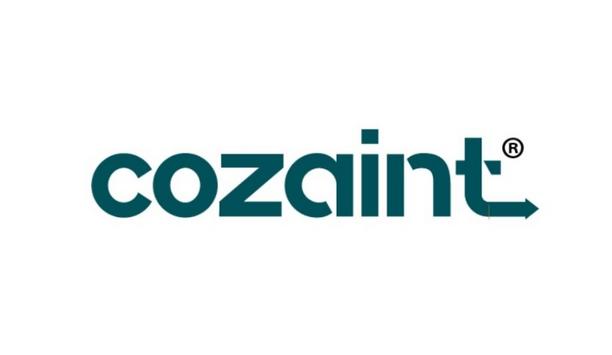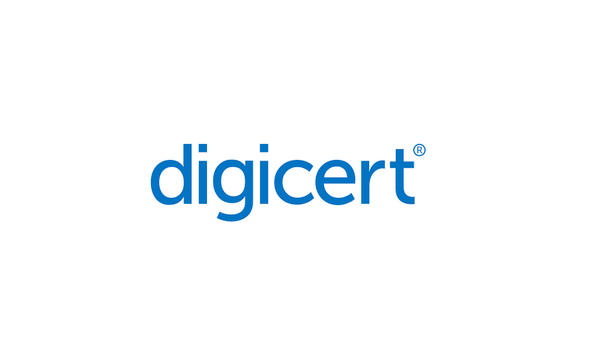Oracle Corporation - Experts & Thought Leaders
Latest Oracle Corporation news & announcements
A new entry in the cyber-physical security marketplace making its first public introduction, MERON is demonstrating a groundbreaking new solution for Physical Identity and Access Management (PIAM) branded PIAM+ here at GSX 2024 in booth 1955. MERON is launched by industry veterans Sharad Shekar and Imran Rana with the mission to usher in the next generation of AI-driven PIAM and Security Incident Management that overcomes the longstanding shortfalls of legacy solutions. Robust PIAM solution Meron is cloud agnostic and runs on cloud infrastructure like Amazon, Oracle, Microsoft, Google, and IBM MERON PIAM+ leverages the latest advancements in data science, artificial intelligence (AI) and micro-services architecture to deliver a seamlessly integrated, highly versatile and comprehensive PIAM and Incident Management application for on-prem or cloud deployment. Meron is cloud agnostic and runs on cloud infrastructure like Amazon, Oracle, Microsoft, Google, IBM, Alibaba, etc. “During the course of several consultation projects with pioneering companies over the past few years, it became quite clear that organisations with large numbers of employees and/or contracted workers are seeking a better, more robust PIAM solution that goes beyond legacy solutions,” said Sharad Shekhar, Principal at MERON. Creation of MERON technology Shekhar added: “This led to many discussions with longstanding partners and developers around the globe over the course of last two to three years, and the creation of MERON technology last year and public release of our new PIAM+ solution which we are debuting here at GSX 2024.” MERON PIAM+ delivers a comprehensive approach to managing identities over their entire lifecycle and securing physical access. It fully integrates identity verification, access control, incident management and security policies to ensure only authorised individuals can enter specific areas they have clearance to enter. Innovative PIAM+ solution MERON PIAM+ denotes itself from legacy applications by integrating advanced AI technologies This innovative PIAM+ solution streamlines the process of granting, monitoring, and revoking access, enhancing security and compliance while reducing the risk of unauthorised entry. By centralising and automating these functions, MERON PIAM+ helps organisations protect their assets, ensure regulatory compliance and maintain more secure environments. MERON PIAM+ distinguishes itself from legacy applications by integrating advanced AI technologies, automation and analytics to provide enhanced security, efficiency, and adaptability. Launch of MERON PIAM+ The unique PIAM solution employs modern microservices-based platform architecture – a revolutionary approach that breaks down applications into smaller, independent services, each focused on a specific function resulting in unlimited scalability with improved system maintainability, support and upgradability. “We have already engaged with several large organisations who have expressed extreme interest in MERON PIAM+, and we are currently collaborating with select high-profile systems integrators with customer bases of large organisations,” continued Shekhar. “We are also now looking to further expand our business network, as well as our team of identity and access management technology and sales experts to further support the launch of MERON PIAM+.”
Cozaint, an innovator in video surveillance storage solutions, unveiled Marcia, a groundbreaking software platform that dramatically reduces storage costs while making video playback and reviews effortlessly. Cozaint Marcia™ Cozaint Marcia™ represents a significant leap forward in the video surveillance storage market. Traditional solutions often require expensive, disk-only storage infrastructure, causing high costs and complex management. Marcia disrupts this model by leveraging a managed tiered storage infrastructure. Cost-efficiency Marcia abstracts the backend storage hardware from the front-end VMS solution This innovative approach intelligently stores video data across various storage tiers, optimising cost-efficiency without compromising accessibility. Marcia abstracts the backend storage hardware from the front-end VMS solution, allowing for seamless, fully integrated, and managed online/offline storage while allowing for easy video playback for many VMS solutions. Readily accessible record “We are thrilled to introduce Marcia, a software solution that empowers integrators to unlock the full potential of video surveillance systems,” said Jay Jason Bartlett, CEO of Cozaint. “With Marcia, organisations can finally overcome the burden of high storage costs while ensuring they have a clear and readily accessible record of their video data.” Multi-tiered storage Marcia supports multi-tiered storage such as traditional NAS and SAN disk-based storage solutions Marcia is already available for these organisations using Network Optix’s NxWitness™, Digital Watchdog Spectrum® IPVMS, Hanwha Wisenet Wave, Cook Security Piko VMS, and Cozaint’s BOBBYvms video management software systems. Other VMSs to be supported soon. If the user is a VMS vendor, speak with Cozaint about Marcia supporting the system. Marcia supports multi-tiered storage such as traditional NAS and SAN disk-based storage solutions as well as LTO Libraries from vendors such as Dell PowerVault, HPE LTO Storage (formerly HP StorageWorks), IBM LTO System Storage, Fujitsu ETERNUS, Oracle StorageTek, Overland Storage NEO, Qualstar Q Series, and others. Key benefits Dramatically Reduced Storage Costs: Marcia’s tiered storage architecture significantly lowers storage expenses compared to traditional solutions. Simplified Video Management: Effortlessly playback and review all recorded video footage utilising the video management system (VMS) software interface. Scalability for Growth: Seamlessly scale the storage capacity as the needs grow. Peace of Mind: Gain confidence knowing the video surveillance system is backed by a reliable and cost-effective storage solution. Ideal for a wide range of applications Marcia is a versatile solution perfectly suited for various applications, including: A.I./Video Analytics: Analyse a significantly larger video data set for greater operational insight. College Campuses: Adhere to the Cleary Act and easily retain a full year of campus video. Hospitals: Ensure patient safety and compliance with regulations. Casinos: Dramatically reduce storage hardware footprint while also reducing equipment energy costs. Enterprise: Protect the assets and monitor critical operations defending against frivolous lawsuits. Availability Marcia™ is readily available now.
DigiCert, Inc., a pioneering global provider of digital trust, announced accelerated adoption of its Digital Trust solutions as the company closed a record total of new bookings in Q4 of its fiscal year as well as a record number of patents filed. Product innovation and key partnerships, coupled with the increasing demand for Digital Trust, were behind the strong customer demand. As the need for Digital Trust continues to rise – from quantum computing and connected devices to content provenance – DigiCert has accelerated its market position, driven record bookings, bolstered its executive bench, expanded innovation, introduced new products to market, and earned respected industry recognition. Consequences of innovation “While we experienced a lot of great momentum in fiscal 2024, we are even more excited about the opportunities we see for Digital Trust over the next 24 months as more and more organisations endeavour to become quantum ready, coupled with the growing need for trusted devices and content authenticity,” said Amit Sinha, CEO of DigiCert. “What we’re seeing is a crescendo of trust issues brought by the unintended consequences of innovation, and as a long-established provider of the foundation on which trust is built, DigiCert is well positioned to address these issues.” Key business highlights for FY2024 Closed largest bookings quarter in company history in Q4 Appointed Jugnu Bhatia as CFO and Dave Packer as CRO Published inaugural ESG report Signed new strategic partnerships with Oracle Cloud Infrastructure, TD Synnex, and Deutsche Telekom Hosted first annual Digital Trust Summit in Vegas, where 300+ attendees convened to hear presentations from Oracle, Microsoft, Amazon Devices & Services, Zscaler, RSA Conference, and B. Braun, in addition to DigiCert’s executive leadership team Earned a Net Promoter Score of 76 Published 2024 State of Digital Trust Report and commissioned study on Preparing for a Safe Post Quantum Future Products and innovation Operationalized innovation and filed 32 patents, the most in the company’s history, bringing the total number of patents to 113 issued and 55 pending Launched DigiCert® Trust Lifecycle Manager, which includes Discovery, Management, and Automation, breaking down silos of managing trust across enterprise and brings public & private trust together in a way that hasn’t been done before Expanded the offering in DigiCert® Software Trust Manager to combine continuous code scanning with policy enforcement and monitoring necessary to secure software supply chains Introduced DigiCert Labs that included a free PQC Playground to allow the industry to test NIST-recommended quantum-safe algorithms Launched CertCentral® Europe to support customer requirements for data residency Introduced DigiCert® KeyLocker, cloud-based secure delivery and storage of private code signing keys to comply with the new requirements issued by the CAB Forum Expanded pioneering authoritative DNS network to include an additional point of presence (POP) in Atlanta, enhancing performance for customers in that region Executed various CertCentral enhancements, including webhooks to better support automated workflows, and hosting for Verified Mark Certificates and logo files to speed deployment and VMC renewals Expanded DigiCert® Trust Lifecycle Manager support for third-party certificate authorities: Microsoft CA and AWS Private CA Industry and standards leadership Established the first unaffiliated root of trust for the U.S. EV (electric vehicle) infrastructure initiative (Plug & Charge) and ISO 15118-2 standard Eclipsed one billion televisions with CI Plus certificates in Europe Surpassed 180 billion DNS queries in a single day Completed EU Qualified audits and received certifications for CertCentral and the DigiCert ONE platform Accomplished first-ever DNSTrust SOC2 Audit successfully Successfully conducted 31+ compliance audits, pioneering the industry and showcasing commitment to global security and trust standards Garnered industry recognition including 2023 CRN Channel Chiefs, Top 100 Women in Security, and 2023 Globee Cybersecurity Award.
Insights & Opinions from thought leaders at Oracle Corporation
Many people, quite correctly, point to Salesforce.com—which launched in February of 2000—as the first example of cloud computing. In the years following, the term ‘cloud’ became so popular and was applied to so many products and service offerings, that it became almost meaningless. The result was cloud confusion in the business world and in the media. In one stark example from 2008, Oracle CEO Larry Ellison described news stories about cloud as, ‘complete gibberish.’ Endeavouring to provide some clarity on cloud, the U.S. National Institute of Standards and Technology (NIST) worked for more than two years to put together ‘The NIST Definition of Cloud Computing,’ which defines the five essential cloud computing characteristics and several ‘as-a-service’ cloud computing models. True cloud applications In the security industry, we talk about ‘True Cloud.’ It’s a term coined by Dean Drako, Founder and Former President and CEO of Barracuda Networks, now Founder and CEO of Eagle Eye Networks, IC Manage and Drako Motors. It refers to software running in the cloud that has the five essential cloud computing characteristics. It refers to software running in the cloud that has the five essential cloud computing characteristics A true cloud system is built from the ground up and is designed to function in the cloud for optimum cost and performance, using the Software as a Service (SaaS) model as defined in the NIST document. Despite the efforts of NIST and others, false cloud marketing persists. A CIO magazine article coined the term ‘cloudwashing’ to describe ‘the practice of taking legacy software and running it on a cloud instance, while calling it ‘true cloud.’ Physical security industry So, it should not be surprising that within the physical security industry, many vendors have been loosely using the term ‘cloud’ to market any kind of software deployment in a public cloud data centre (such as AWS or Azure) as a ‘cloud offering,’ implying some level of conformance to the NIST cloud computing definition and its SaaS model, even though there isn’t. Virtualisation and Orchestration are secrets to popularity of cloud popularity. In early 2022, DataArt reported that 94% of all business workloads are now processed on the cloud (75% is SaaS), and that half of all enterprise businesses expect to become cloud-native in 2022 (i.e., all or nearly all applications will be true cloud). A close look at the cloud computing essential characteristics reveals how and why cloud computing is becoming so popular. Operating system software The essential characteristics of cloud are established by using two software techniques The essential characteristics of cloud are established by using two software techniques: virtualisation and orchestration. Virtualisation is a technique of using software to make virtual computing environments that act like physical hardware, but they are really software representations of the capabilities of underlying hardware. This can be used, for example, to split a single physical server into multiple ‘virtual’ servers, making it appear as though each virtual server's operating system software is running on its own dedicated computer hardware and allowing each operating system to be rebooted and run independently. It can also be used in the opposite way, making the memory and processing resources of multiple computers work together as if they were a single large computer. Individual physical server The main difference between cloud virtualisation and traditional virtualisation is that very large, virtualised pools of computing resources are automatically managed by cloud virtualisation software, whereas traditional virtualisation relies on manual processes to adjust the sharing of computing resources on each individual physical server. Orchestration is the automated configuration and coordination of data centre computer systems Orchestration is the automated configuration, management, and coordination of data centre computer systems, applications, and services – including cloud computing services. Orchestration is used to automate complex IT tasks and workflows by simplifying the management of large-scale computing environments. This is what makes self-service possible for cloud-based systems. The five essentials These are the five essential characteristics that make high-performing scalable cloud systems and applications possible: Resource pooling, as described above, is the most fundamental cloud characteristic. A set of virtualised computing resources are shared by many subscribers whose resource usage is isolated from that of other subscribers, which is referred to as multi-tenancy. On-demand self-service allows security integrators or end-users to expand their subscriptions when they want to change the number of cameras, change a camera’s recorded video resolution, or update the number of days for a camera’s video retention. These selections are made in an application dashboard and don’t require human intervention from the cloud application provider. Broad network access means that all user application functionality is available from anywhere an internet connection is available, analogue or network cameras can be connected via cloud-managed appliances at a facility, and cameras made for connecting directly to the cloud data centre can be placed practically anywhere. Rapid elasticity allows computing resources to be increased or decreased instantly, for example, to maintain sufficient video retention for outdoor cameras, which has traditionally been a challenge even for motion-based recording, in weeks when rain, wind or other activity spikes up the percentage of time motion recording is activated. Measured service meters the resources provided to ensure that each subscriber only uses and pays for the resources allotted by subscription. Video management systems That’s why vendors of all types are eager to market their products and services as cloud The combination of these cloud characteristics means that video management systems are always provisioned correctly, eliminating concerns about system sizing and hitting CPU processing or storage capacity ceilings, and trying to prevent over-provisioning, which raises both fixed costs and variable operational costs in non-true-cloud systems. More than two decades after the first cloud computing systems were launched, the benefits of the cloud are well understood. That’s why vendors of all types are eager to market their products and services as the cloud. However, it’s important to look beyond marketing. Pooling, rapid elasticity, and on-demand self-service are not easy to deploy securely and globally. It takes years of cloud computing engineering experience and a considerable amount of investment to get it right. Will your system provide all of the benefits of a true system to both end-user and integrator? It’s worth taking the time to ask your vendor how the system conforms to the five essential characteristics of a true cloud system.
A modern guide to data loss prevention
Download7 proven solutions for law enforcement key control and asset management
DownloadThe truth behind 9 mobile access myths
DownloadAccess control system planning phase 2
DownloadSecurity practices for hotels
Download















